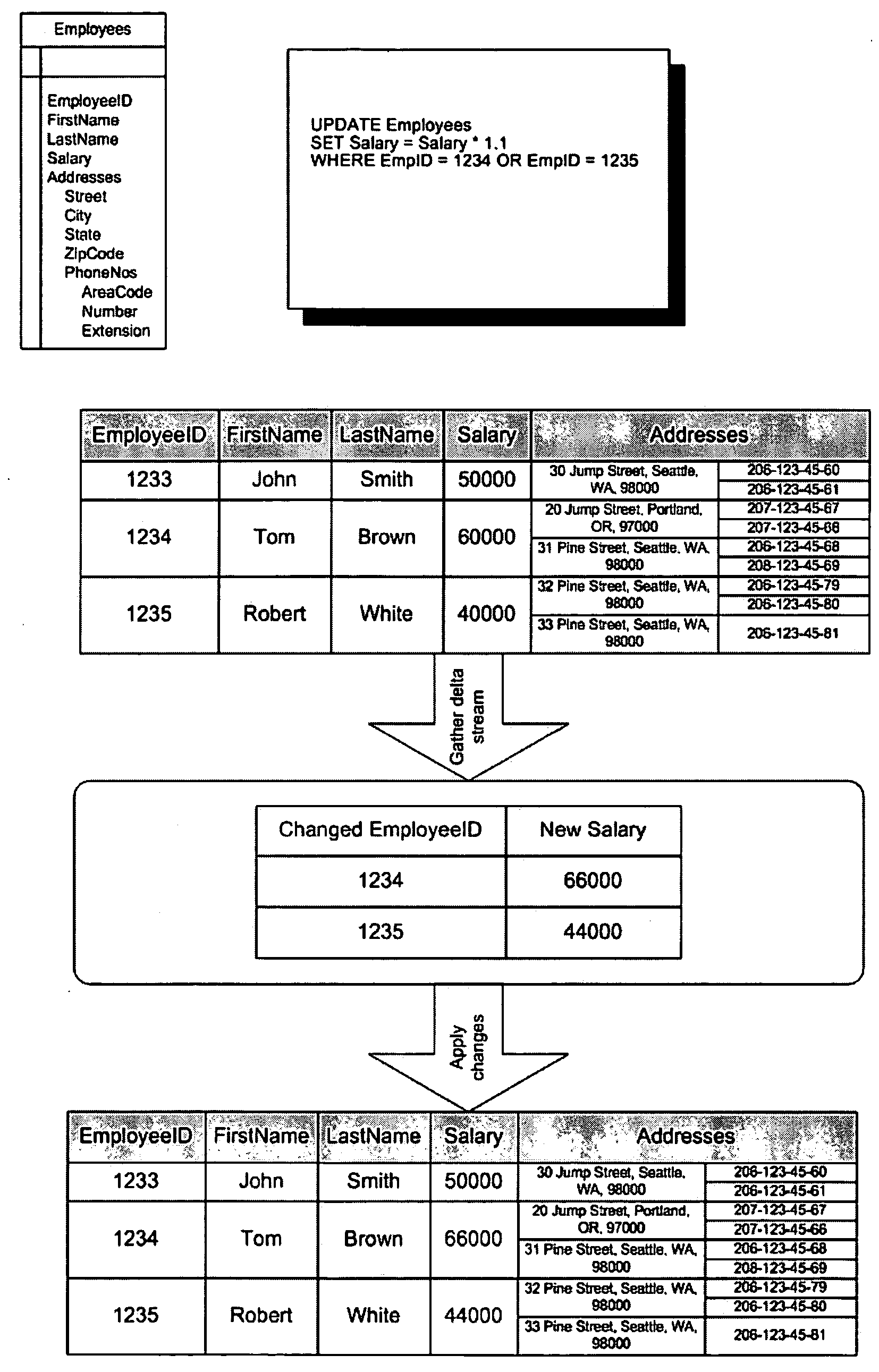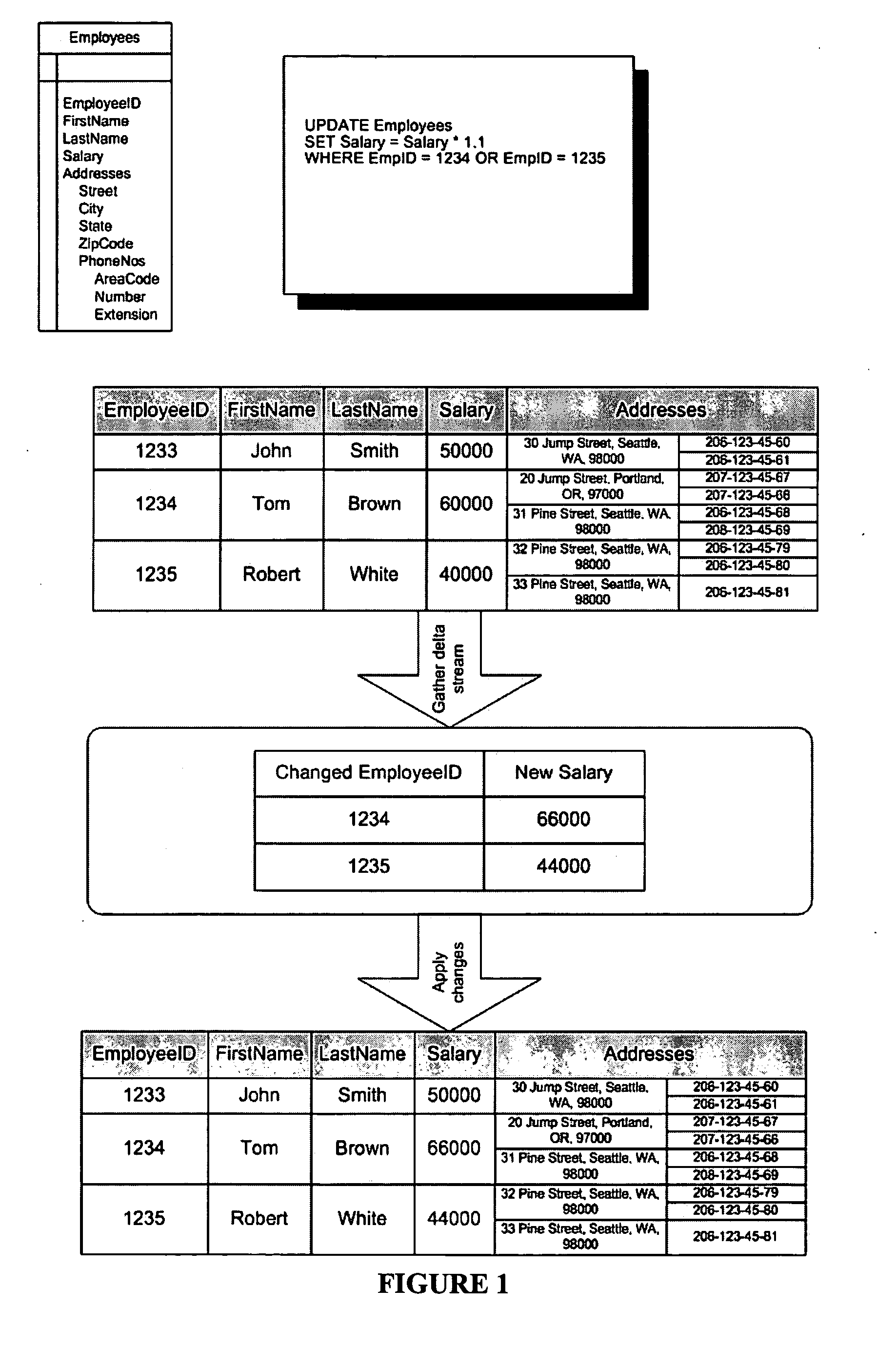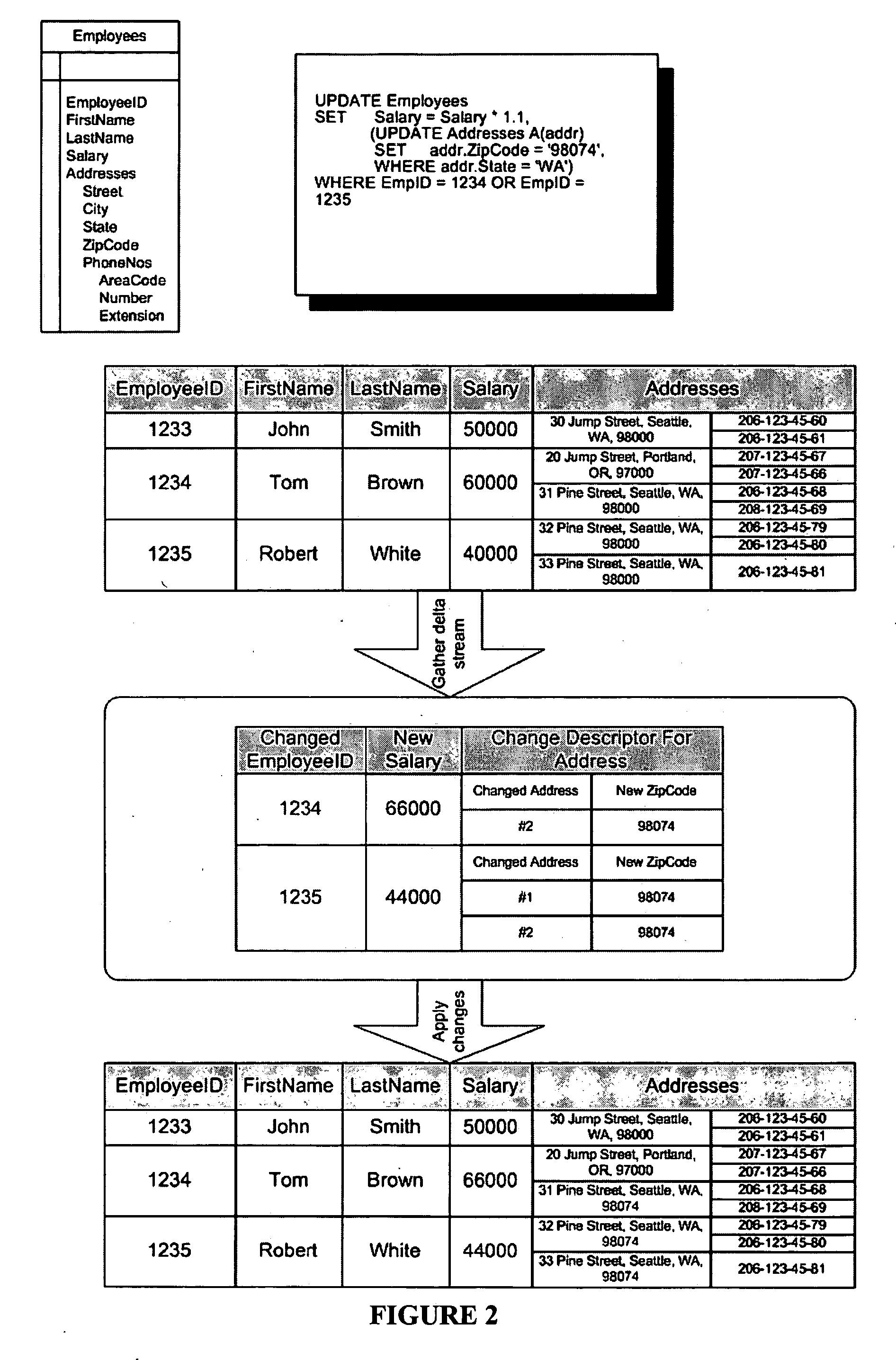SQL language extensions for modifying collection-valued and scalar valued columns in a single statement
a technology of scalar value and collection value, applied in the field of database systems, to achieve the effect of rich and efficient support and efficient implementation of complex and partial updates
- Summary
- Abstract
- Description
- Claims
- Application Information
AI Technical Summary
Benefits of technology
Problems solved by technology
Method used
Image
Examples
Embodiment Construction
[0017] The subject matter of the present invention is described with specificity to meet statutory requirements (35 U.S.C. 1 et seq.). However, the description itself is not intended to limit the scope of the invention. Rather, the inventors have contemplated that the claimed subject matter might also be embodied in other ways to include different steps or elements similar to the ones described herein as may be used in conjunction with other present or future technologies during the lifetime of this patent. Moreover, although the term “step” may be used herein to connote different aspects of methods employed, this term should not be interpreted as implying any particular order among or between various steps herein disclosed unless and except when a specific order of individual steps is explicitly described as being necessary.
[0018] Those skilled in the database and memory management arts will appreciate that the present invention will be useful to any extended relational database s...
PUM
 Login to View More
Login to View More Abstract
Description
Claims
Application Information
 Login to View More
Login to View More - R&D
- Intellectual Property
- Life Sciences
- Materials
- Tech Scout
- Unparalleled Data Quality
- Higher Quality Content
- 60% Fewer Hallucinations
Browse by: Latest US Patents, China's latest patents, Technical Efficacy Thesaurus, Application Domain, Technology Topic, Popular Technical Reports.
© 2025 PatSnap. All rights reserved.Legal|Privacy policy|Modern Slavery Act Transparency Statement|Sitemap|About US| Contact US: help@patsnap.com



